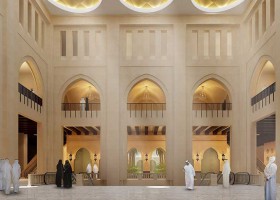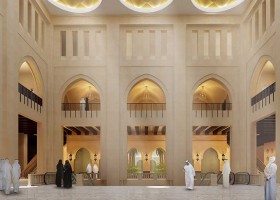A wide-ranging plan, with Makkah at its heart
Key to ALJREIC’s construction and development plans both now and for many years to come, the Jabal al Kaaba project has several important stages of growth – all based around the very heart of Islam’s holiest of sites.
Already completed, Phase 1 of this ground-breaking development saw the construction of the Anjum Hotel – Makkah: a landmark 5-star facility designed and built specifically to accommodate those making their annual pilgrimage to the Grand Mosque. Graciously hosting guests year round in a space that is both scalable and intuitive in terms of circulation and configuration, Anjum Hotel – Makkah enhances the environment around the Grand Mosque and aligns strongly with the core values of the Anjum brand: Honesty, Beauty, Modesty, Simplicity and Elegance.
Unmatched in scale, unparalleled in vision
The master plan for the development of the Anjum Hotel – Makkah is a bold and exciting one. Phases 2 and 3 will see hospitality on the grandest of scales:
- 5,528 guest rooms – nearly 530,000 sq m of total construction
- Capacity to accommodate 22,000 guests during Hajj, 14,000 guests during Ramadan and 8,300 during Umrah
- 18 restaurants will hold a total of 11,500 seats
- Two large banquet halls – with supporting meeting space – seating up to 3,500 guests
- Four prayer halls, accommodating 4,000 people
- Parking for 600 cars and 25 buses
- Phase 2 expansion of Towers C, D and E, linking to Phase 3 expansion of Towers A and B via a connecting bridge
- Towers will sit atop grandly-appointed terraced podiums and incorporate unique design elements, emphasising the feel of a desert oasis
- A feeling of calm and serenity will be further enhanced through courtyards, shaded walkways and canopied gardens – with public plazas for rest and prayer
A focus on sustainability
As a responsible company, sustainability is at the heart of every development we undertake; the Jabal al Kaaba project is a prime example. By maximizing the benefit of the resources that are used, the project design will have a lower impact on the local environment and a positive impact on the construction and operation of the overall site.
In terms of sustainability, many strategies are utilised for maximum effectiveness and impact, including:
- Water conservation
- Reducing wastage
- Energy conservation



